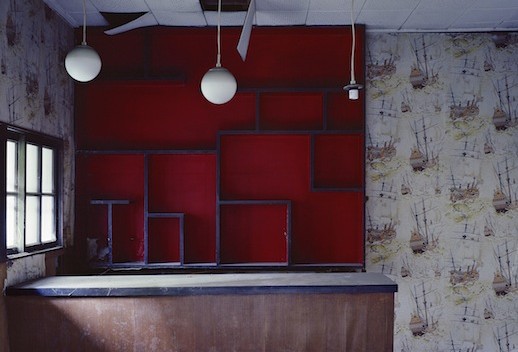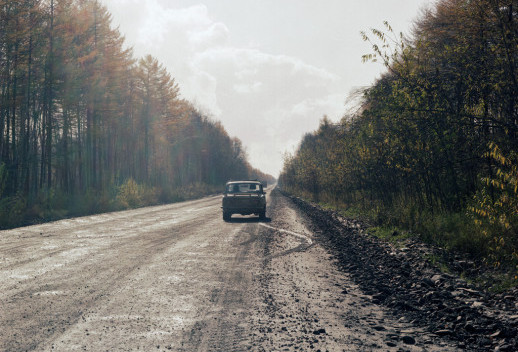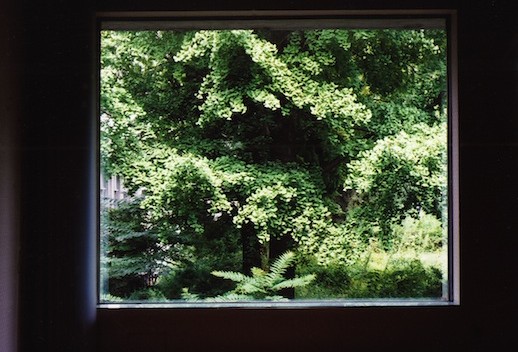Remembrance: An Interview with Tomoko Yoneda
Tomoko Yoneda, one of Japan’s most remarkable contemporary artists, has paved her own way through the art world as a photographer who digs up twentieth century history. From the site of the Bloody Sunday massacre in Northern Ireland, to the site of the Normandy beach landing, Yoneda is an artist who uses essentially conceptual photography to provoke thoughts surrounding our not so distant past and the importance of history in modern societies. She sat for an interview in the midst of final installations for her current solo exhibition at the Tokyo Metropolitan Museum of Photography, “We Shall Meet in the Place Where There is no Darkness”.

“The exhibition title comes from George Orwell’s novel, ‘Nineteen Eighty-Four’”, explained the artist. “I was reading the book in English and I translated that line into Japanese for this exhibition. It struck me as rather appealing because the place with no darkness is the interrogation room. While light usually connotes positive feelings, this light is something the characters dread. I found that inversion quite interesting”.
Curated by Satomi Fujimura, the exhibition is partly a mid-career survey, with a heavy focus on Yoneda’s works created in Asia. As a Japanese artist, Yoneda has particularly been drawn to places of significance in her country’s recent imperial history, such as sites in what used to be known as Manchuria, as well as Japanese architecture in Taiwan.
Her oeuvre also extends to more recent crises that speak to the present. Despite living overseas, like many of her Japanese contemporaries Yoneda was compelled to make art in response to the Great East Japan Earthquake of March 2011 and its subsequent tsunami and ongoing nuclear crisis. “At the time of March 11th, I was in my home in London. I worried about my friends in the Tohoku region. When news broke of the nuclear meltdown, I was deeply disappointed in the failure of the power company to protect the people living nearby,” she said.
“I was invited for a residency at Tokyo Wonder Site in winter the previous year. I arrived in Japan in May 2011 and stayed until 2012. At first, my proposal was to photograph architecture around Tokyo remaining from the Meiji era (1868-1912) of modernization, but that changed to respond to the new situation.”

The exhibition features two new series, “Cumulus” and “The Island of Sakhalin”, as well as Yoneda’s very first video artwork, We Shall Meet in the Place Where There is no Darkness (2013). “Cumulus” is a provocative series of images of Japan’s most sensitive political sites, including Yasukuni Shrine, Hiroshima Peace Memorial Park, Imperial Palace, and now Fukushima. When discussing what makes her photography different to journalism, Yoneda pointed to the series—“These are made without an agenda. Journalism has a particular message and feeling it wants to communicate, but I think that my works are much more open. There’s a lot of mental space so that audiences can think for themselves.”
“The Island of Sakhalin” is a series of photographs taken on the Russian island of Sakhalin, located north of Hokkaido. During the 19th and 20th centuries, the island had been disputed territory between Russia and Japan. Yoneda’s photographs capture locations around the island that have connections with its past identity as a Russian penal colony and the site of battles during the last stages of World War II. The series depicts the rusted carcasses of ships and other visible reminders of this history.
The multi-channel video features static footage of locations on Sakhalin as well as footage of the Aurora Borealis as seen from Finland. Viewers can gaze at one of Earth’s most awe-inspiring spectacles while youths climb a monument to Russia’s military past in Sakhalin’s town square. The pairing of the two—one natural and one human-made—is an interesting combination that has not been seen in Yoneda’s works before.
While there has been much made of Tomoko Yoneda’s identity as a Japanese artist, the interview also touched upon the fact that she is a Japanese woman; and the fact that history is seldom written by Japanese women. Twice removed from the orthodox canon of those who record history—first by coming from the “losing” side of World War II, and secondly for being a woman—the question was raised concerning how important her identity is to her art-making. “Of course, I am aware of it”, responded Yoneda, “and I believe all artists should be aware of who they are, where they stand. Artists should be responsible and choose their messages wisely.”
“I guess this is what drives me to create photographs about history. I want to show it from a new perspective. Particularly when it comes to my Japanese audience, I feel something like a duty. People should know history from all kinds of perspectives, and never forget or ignore it.”

Emily Wakeling
Emily Wakeling


